Michael Muelly
Post hoc Explanations may be Ineffective for Detecting Unknown Spurious Correlation
Dec 09, 2022



Abstract:We investigate whether three types of post hoc model explanations--feature attribution, concept activation, and training point ranking--are effective for detecting a model's reliance on spurious signals in the training data. Specifically, we consider the scenario where the spurious signal to be detected is unknown, at test-time, to the user of the explanation method. We design an empirical methodology that uses semi-synthetic datasets along with pre-specified spurious artifacts to obtain models that verifiably rely on these spurious training signals. We then provide a suite of metrics that assess an explanation method's reliability for spurious signal detection under various conditions. We find that the post hoc explanation methods tested are ineffective when the spurious artifact is unknown at test-time especially for non-visible artifacts like a background blur. Further, we find that feature attribution methods are susceptible to erroneously indicating dependence on spurious signals even when the model being explained does not rely on spurious artifacts. This finding casts doubt on the utility of these approaches, in the hands of a practitioner, for detecting a model's reliance on spurious signals.
Debugging Tests for Model Explanations
Nov 10, 2020



Abstract:We investigate whether post-hoc model explanations are effective for diagnosing model errors--model debugging. In response to the challenge of explaining a model's prediction, a vast array of explanation methods have been proposed. Despite increasing use, it is unclear if they are effective. To start, we categorize \textit{bugs}, based on their source, into:~\textit{data, model, and test-time} contamination bugs. For several explanation methods, we assess their ability to: detect spurious correlation artifacts (data contamination), diagnose mislabeled training examples (data contamination), differentiate between a (partially) re-initialized model and a trained one (model contamination), and detect out-of-distribution inputs (test-time contamination). We find that the methods tested are able to diagnose a spurious background bug, but not conclusively identify mislabeled training examples. In addition, a class of methods, that modify the back-propagation algorithm are invariant to the higher layer parameters of a deep network; hence, ineffective for diagnosing model contamination. We complement our analysis with a human subject study, and find that subjects fail to identify defective models using attributions, but instead rely, primarily, on model predictions. Taken together, our results provide guidance for practitioners and researchers turning to explanations as tools for model debugging.
Generative Modeling for Small-Data Object Detection
Oct 16, 2019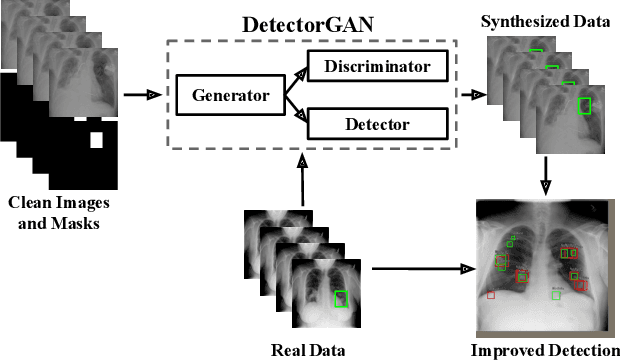

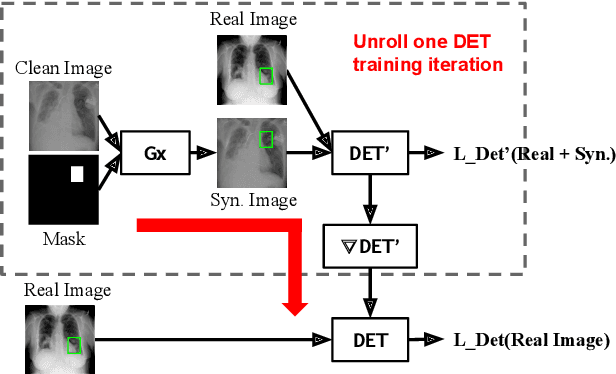

Abstract:This paper explores object detection in the small data regime, where only a limited number of annotated bounding boxes are available due to data rarity and annotation expense. This is a common challenge today with machine learning being applied to many new tasks where obtaining training data is more challenging, e.g. in medical images with rare diseases that doctors sometimes only see once in their life-time. In this work we explore this problem from a generative modeling perspective by learning to generate new images with associated bounding boxes, and using these for training an object detector. We show that simply training previously proposed generative models does not yield satisfactory performance due to them optimizing for image realism rather than object detection accuracy. To this end we develop a new model with a novel unrolling mechanism that jointly optimizes the generative model and a detector such that the generated images improve the performance of the detector. We show this method outperforms the state of the art on two challenging datasets, disease detection and small data pedestrian detection, improving the average precision on NIH Chest X-ray by a relative 20% and localization accuracy by a relative 50%.
Sanity Checks for Saliency Maps
Oct 28, 2018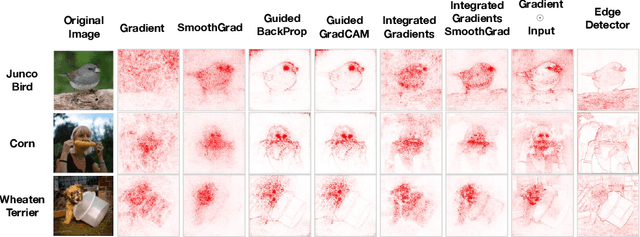
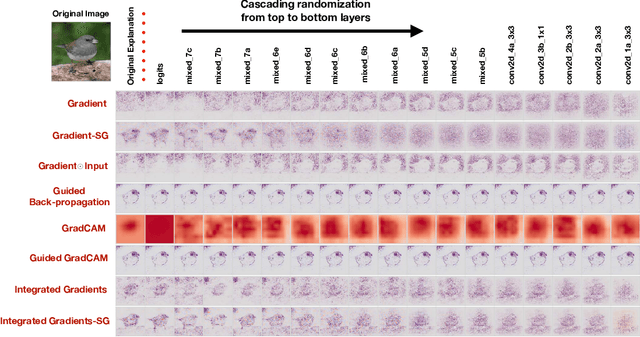
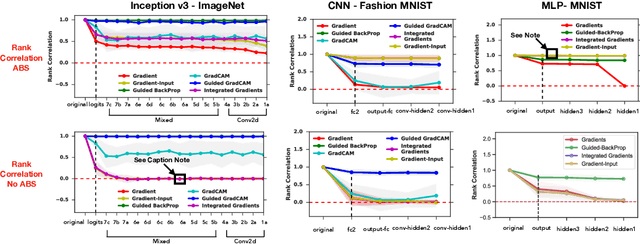

Abstract:Saliency methods have emerged as a popular tool to highlight features in an input deemed relevant for the prediction of a learned model. Several saliency methods have been proposed, often guided by visual appeal on image data. In this work, we propose an actionable methodology to evaluate what kinds of explanations a given method can and cannot provide. We find that reliance, solely, on visual assessment can be misleading. Through extensive experiments we show that some existing saliency methods are independent both of the model and of the data generating process. Consequently, methods that fail the proposed tests are inadequate for tasks that are sensitive to either data or model, such as, finding outliers in the data, explaining the relationship between inputs and outputs that the model learned, and debugging the model. We interpret our findings through an analogy with edge detection in images, a technique that requires neither training data nor model. Theory in the case of a linear model and a single-layer convolutional neural network supports our experimental findings.
 Add to Chrome
Add to Chrome Add to Firefox
Add to Firefox Add to Edge
Add to Edge